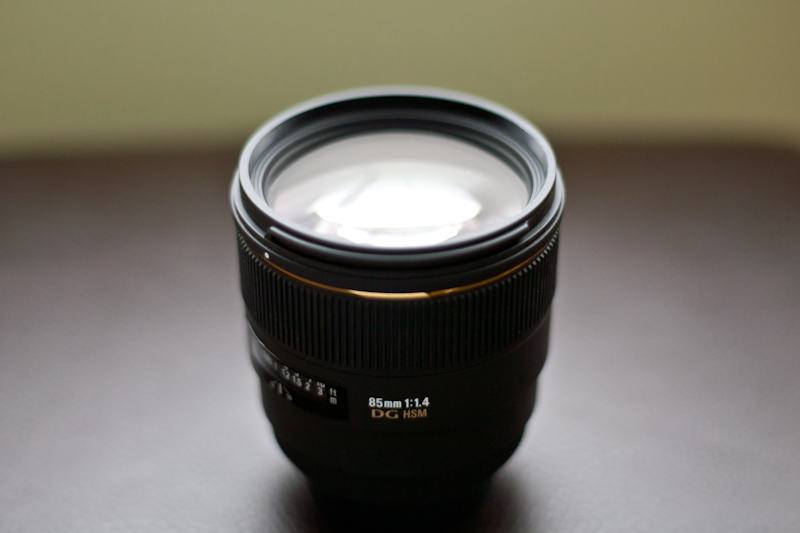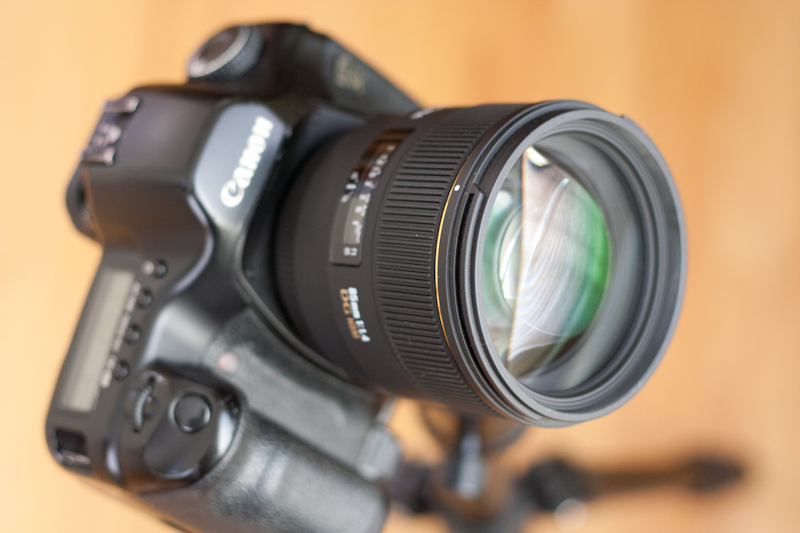Five years ago, if you had asked me if I wanted to review a Sigma lens I probably would have politely passed on the offer. To many photographers, Sigma has historically been the cheaper and lower quality alternative to the big names’ (Canon, Nikon, etc.) offerings. I was a poor college student when I purchased my last film camera so I decided to save some coin and go for the cheaper Sigma version of the lens I really wanted. That was a mistake. After my experience with that lens, I swore I would never buy another Sigma product. How times have changed.
A Complete 180
Honestly, I would have to say my thoughts about Sigma and their products have done a complete 180* and it is all because of one lens, the Sigma 50mm F/1.4. A while back, I had the chance to borrow a friends Sigma 50mm F/1.4 and I have to say, I was truly blown away. I personally think it’s miles ahead of Canon’s 50mm F/1.4. Knowing the quality results I was able to get with the Sigma 50mm F/1.4, I was eager to see if the new Sigma 85mm F/1.4 could keep up with it’s 50mm counterpart. Full disclosure, I am a big fan of primes, especially fast primes. Being an available light shooter, I am always excited to use fast glass. Let’s take a look at this low light monster from Sigma…
Out of the Box
The first thing I noticed about this lens is its size…it’s a big boy. The lens is on the heavier side but the build quality is very good and it feels natural and balanced mated to my Canon 5D. After taking off the lens cap you are faced with a massive chunk of glass and I’m not going to lie, it’s beautiful!
This larger than normal front element is designed to provide your full frame (FF) DSLR with as much light as possible which results in less vignetting when shooting at wider apertures. The body itself is made of high grade plastic which has a very solid feel. This plastic body is also slightly textured which provides the user with a better grip while in use.
My only gripe with the physical characteristics of this lens is the focusing ring; I wouldn’t exactly call its action smooth. It feels like there is some very fine sand or dirt stuck in the focusing mechanism. If you’re looking for L lens type smoothness, you’re going to be less than satisfied. I’m not sure if this will smooth itself out with use, but it is slightly disappointing. The good news is, with the exception of the focusing ring, everything about this lens screams quality.
Sigma On A Crop Body vs. Full Frame
Like I said before, this lens is rather large and heavy which means it really feels more at home on a larger body DSLR. The Sigma 85mm F/1.4 did spend some time on my Canon Rebel XT (yes, I still have one) and while it functioned well, the weight of the lens made the whole unit feel awkward and front-heavy. Below are a few shots with the Sigma 85mm F/1.4 mounted on a Canon 5D and a Canon Rebel XT.
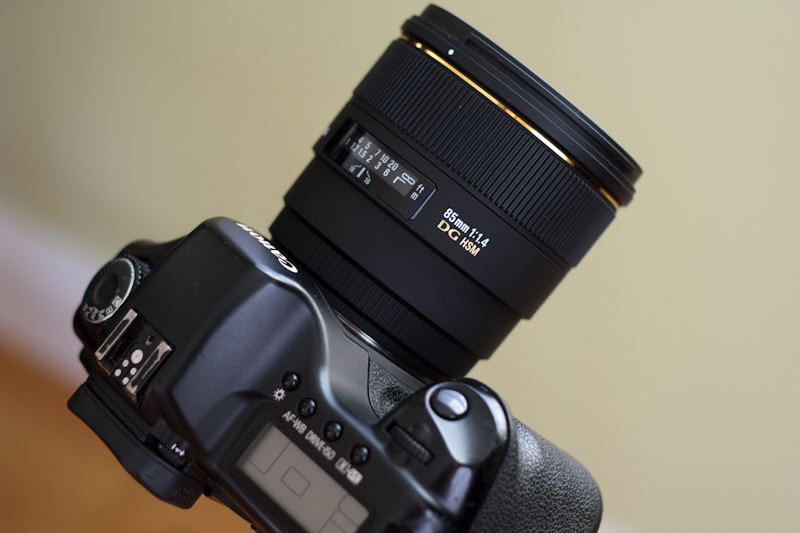
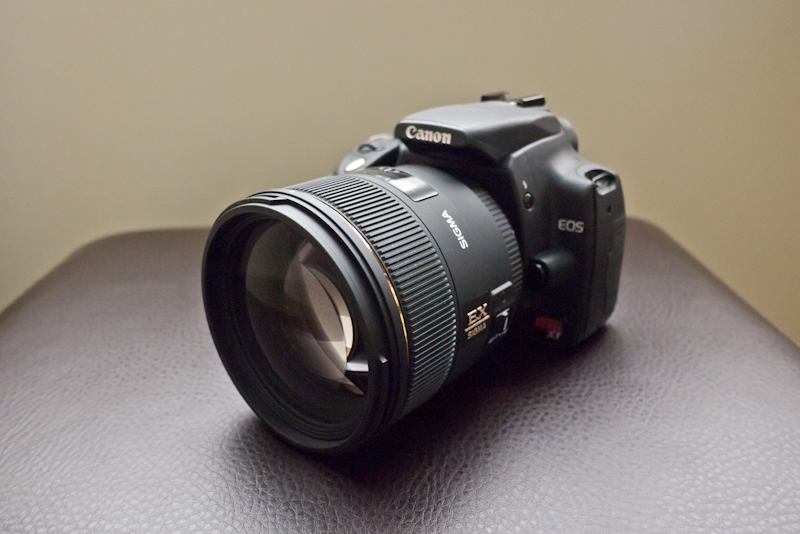
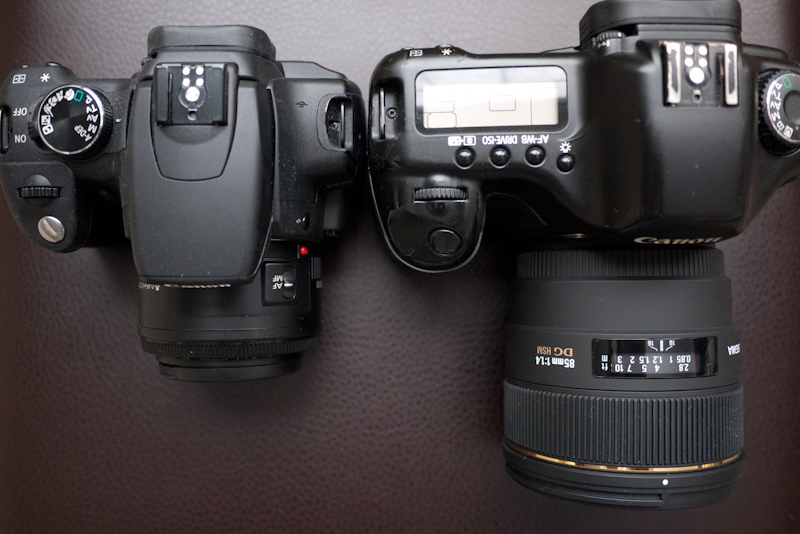
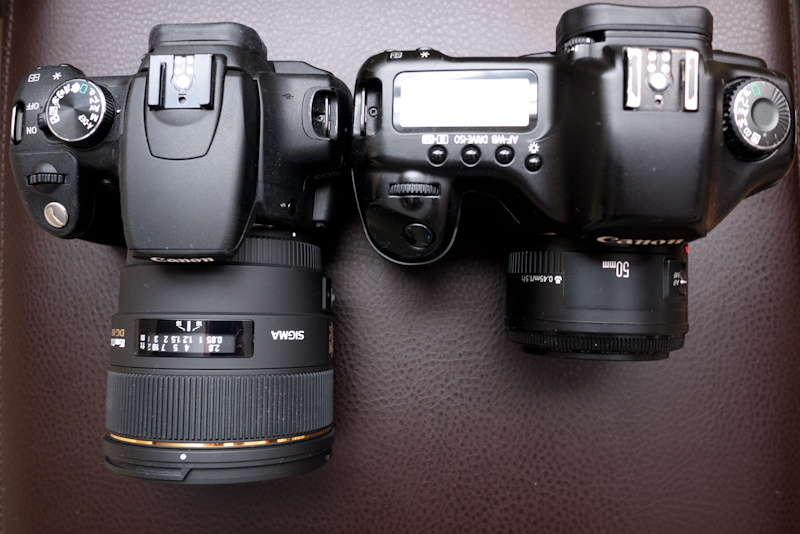
About the Lens
- Lens Construction: 11 Elements in 8 Groups
- Angle of View: 28.6
- Number of Diaphragm Blades: 9
- Minimum Aperture: f16
- Minimum Focusing Distance: 85cm / 33.5 in
- Filter Size: 77mm
- Maximum Magnifications: 1:8.6
- Dimensions (Diameer x Length): 86.4×87.6 mm/3.4×3.4 in
- Weight: 725g / 25.6oz.
- Terminology: HSM – Hyper-Sonic Motor, EX – EX Lens, DG – DG for Digital
Initial Shooting Impressions
Given the limited amount of time I’ve spent shooting with this lens, I would have to say that I’m impressed. I haven’t had a chance to put it through any strenuous tests but initial results are very good. Here is a short list of my thoughts on a variety of items:
- Bokeh: Now, bokeh is a tough thing to quantify or measure and every photographer has their own taste when it comes to bokeh but I have to say that I personally think the Sigma 85mm F/1.4 produces excellent bokeh. Out of focus areas are smooth and creamy. Bokeh balls are nice and round…no hexagons here. Much of this can be attributed to the 9 bladed aperture. Quality bokeh is a crucial characteristic to have as for a lens of this length (85mm) as it will mostly likely spend the majority of it’s life as portrait lens.
- Focusing Speed & Accuracy: Focusing accuracy seems to be dead on, even when shooting wide open. Focusing speed however is average to slow. If the Canon 50mm F/1.8 II, A.K.A. “The Nifty Fifty” and the Sigma 85mm F/1.4 were to have a race, it would probably end in a tie.
- Image Quality: Like I said before, initial impression are very good. I haven’t had a chance to really pixel peep, but color, contrast, and sharpness on my first group of images look excellent.
More to come in the field review. Let us know your thoughts and questions in the comments below.
Please Support The Phoblographer
We love to bring you guys the latest and greatest news and gear related stuff. However, we can’t keep doing that unless we have your continued support. If you would like to purchase any of the items mentioned, please do so by clicking our links first and then purchasing the items as we then get a small portion of the sale to help run the website.


